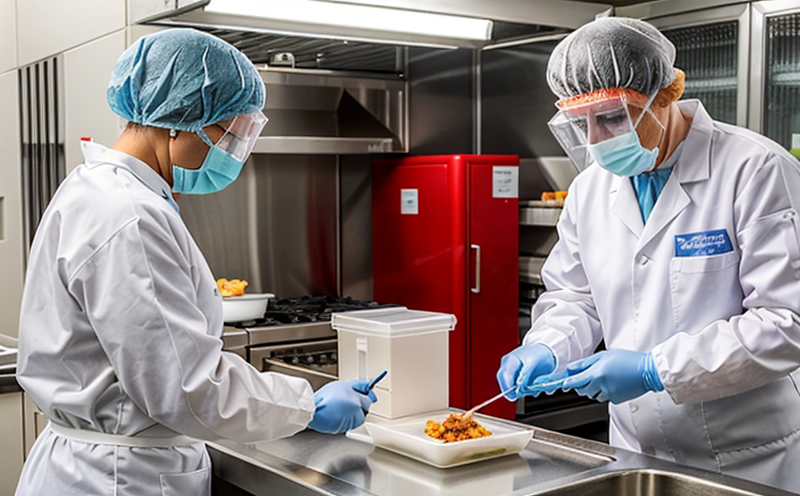FDA BAM Chapter 27 Detection of Norovirus in Leafy Greens
The Foodborne Advancement Module (BAM) Chapter 27 is a critical part of the U.S. Food and Drug Administration’s (FDA) efforts to ensure the safety of leafy greens, particularly susceptible to contamination by noroviruses. This chapter provides detailed protocols for detecting norovirus in leafy green vegetables such as lettuce, spinach, and other similar produce. The importance of this testing lies not only in meeting regulatory requirements but also in protecting public health.
Noroviruses are a leading cause of viral gastroenteritis worldwide. Leafy greens pose unique challenges due to their growing conditions, post-harvest handling processes, and consumption patterns. Contamination can occur during cultivation in water or irrigation systems, harvesting, processing, packaging, and even storage before consumption. The FDA emphasizes the importance of preventing these contaminants from reaching consumers.
The BAM Chapter 27 protocol is designed to detect norovirus RNA through reverse transcription-polymerase chain reaction (RT-PCR). This method involves several critical steps: sample collection, nucleic acid extraction, amplification of target sequences, and final detection. Sample preparation includes homogenization of the leafy greens followed by filtration or centrifugation to isolate viral particles.
The FDA recommends specific reagents and materials for this process, ensuring consistency across laboratories. The chapter specifies the use of certified reference materials (CRMs) as positive controls in every test run. These CRMs are essential for validating the accuracy and reproducibility of results. Additionally, negative control samples must be included to ensure that background signals do not interfere with the detection of norovirus.
Accurate interpretation of results is crucial for effective decision-making. The BAM Chapter 27 protocol outlines strict criteria for accepting or rejecting batches based on test outcomes. A positive result requires immediate investigation into the cause and implementation corrective actions to prevent further contamination. Negative results, however, do not guarantee norovirus-free produce; other pathogens may still be present.
The impact of accurate testing extends beyond regulatory compliance. It enhances consumer confidence in the safety of leafy greens and supports industry-wide efforts to reduce foodborne illness outbreaks. By adhering to BAM Chapter 27, laboratories contribute significantly to public health by ensuring that only safe products reach consumers.
- Sample Collection: Freshly harvested leafy greens are collected in sterile containers and transported under refrigeration to the laboratory for immediate processing.
- Nucleic Acid Extraction: Viral RNA is extracted using a commercially available kit designed specifically for food samples.
- Amplification: The extracted RNA undergoes reverse transcription followed by PCR amplification targeting specific regions of the norovirus genome.
- Detection: Amplified products are analyzed on agarose gels and compared against positive controls to determine presence or absence of norovirus.
The BAM Chapter 27 protocol has been validated through extensive research and is widely recognized for its reliability. Compliance with this standard ensures that laboratories can consistently produce accurate results, thereby maintaining the integrity of food safety systems.
In conclusion, FDA BAM Chapter 27 Detection of Norovirus in Leafy Greens plays a pivotal role in ensuring the safety of leafy green vegetables. By adhering to these stringent protocols, laboratories contribute significantly to public health and uphold the highest standards of quality assurance.
Applied Standards
The FDA BAM Chapter 27 Detection of Norovirus in Leafy Greens is based on internationally recognized guidelines and standards. The chapter primarily aligns with:
- ISO/TS 15925: Guidelines for the validation of methods used to detect noroviruses in food.
- ASTM D7806: Standard guide for detection and quantification of norovirus in shellfish.
- EN ISO/TS 13294: Guidelines for the validation of methods used to detect noroviruses in food.
The FDA also emphasizes compliance with these standards when conducting tests under BAM Chapter 27. This ensures that laboratories worldwide can harmonize their practices and achieve consistent results.
Scope and Methodology
BAM Chapter 27 applies specifically to the detection of noroviruses in leafy green vegetables. The scope includes:
- Detection of norovirus RNA using RT-PCR methods.
- Use of certified reference materials (CRMs) as positive controls.
- Inclusion of negative control samples to validate background signal stability.
The methodology involves several key steps:
- Sample Collection: Freshly harvested leafy greens are collected in sterile containers and transported under refrigeration to the laboratory for immediate processing.
- Nucleic Acid Extraction: Viral RNA is extracted using a commercially available kit designed specifically for food samples.
- Amplification: The extracted RNA undergoes reverse transcription followed by PCR amplification targeting specific regions of the norovirus genome.
- Detection: Amplified products are analyzed on agarose gels and compared against positive controls to determine presence or absence of norovirus.
This comprehensive approach ensures accurate detection and reliable results, which is essential for maintaining high standards in food safety testing.





